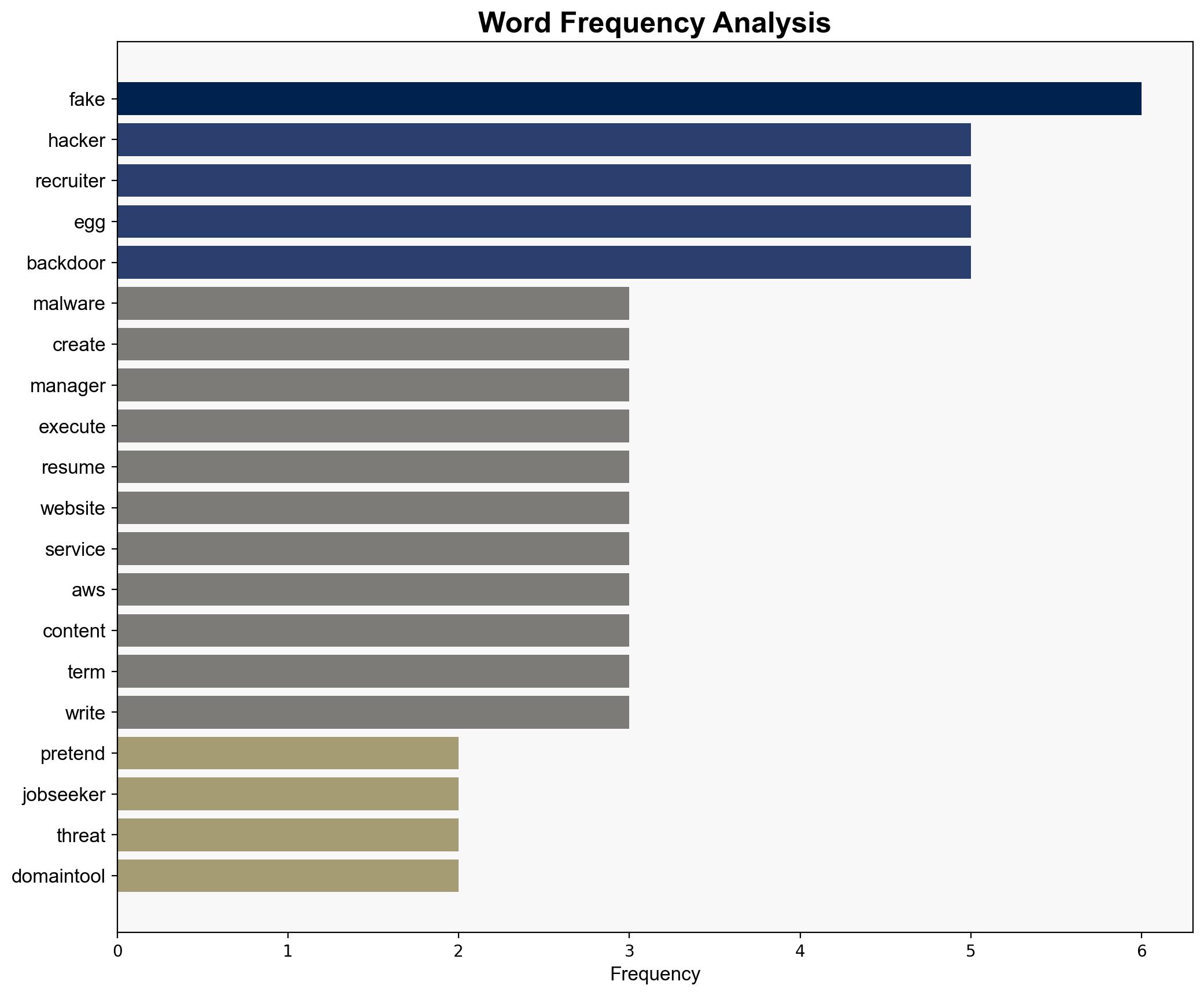Hackers are now pretending to be jobseekers to spread malware – TechRadar
Published on: 2025-06-11
Intelligence Report: Hackers are now pretending to be jobseekers to spread malware – TechRadar
1. BLUF (Bottom Line Up Front)
Cyber adversaries are employing sophisticated social engineering tactics by masquerading as job seekers to infiltrate organizations. This method involves creating fake personas on professional networks and targeting HR managers and recruiters. The primary objective is to deploy a backdoor malware known as “Egg” to steal credentials and execute unauthorized commands. Immediate action is recommended to enhance cybersecurity protocols and awareness training among HR personnel.
2. Detailed Analysis
The following structured analytic techniques have been applied to ensure methodological consistency:
Adversarial Threat Simulation
Simulated scenarios reveal that adversaries exploit professional networking platforms to establish trust before transitioning to email-based attacks. This approach increases the likelihood of malware delivery.
Indicators Development
Key indicators include the creation of fake LinkedIn profiles, anonymous domain purchases, and the use of cloud services to host malicious content. Monitoring these activities can aid in early detection.
Bayesian Scenario Modeling
Probabilistic models suggest a high likelihood of increased attacks targeting recruitment processes, with potential expansion into other corporate functions.
3. Implications and Strategic Risks
This tactic poses significant risks to organizational data integrity and security. The infiltration of HR systems could lead to widespread credential theft, impacting not only the targeted organization but also its partners and clients. The cross-domain risk includes potential economic damage and reputational harm.
4. Recommendations and Outlook
- Enhance cybersecurity training for HR personnel to recognize and report suspicious activities.
- Implement multi-factor authentication and regular audits of recruitment processes.
- Scenario-based projections:
- Best case: Increased awareness leads to a significant reduction in successful attacks.
- Worst case: Failure to address vulnerabilities results in widespread data breaches.
- Most likely: Gradual improvement in defenses with intermittent successful breaches.
5. Key Individuals and Entities
Sead (journalist), TechRadar (source), DomainTools (cybersecurity researcher), AWS (cloud service provider)
6. Thematic Tags
national security threats, cybersecurity, social engineering, HR vulnerabilities





